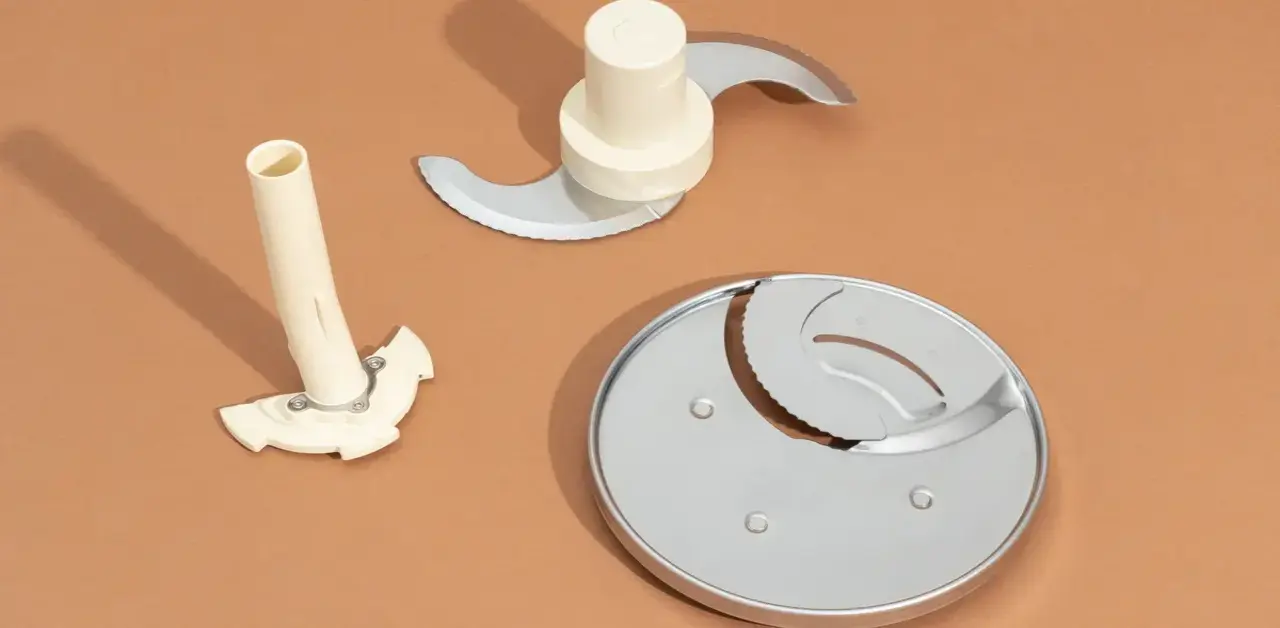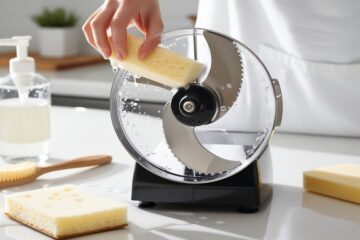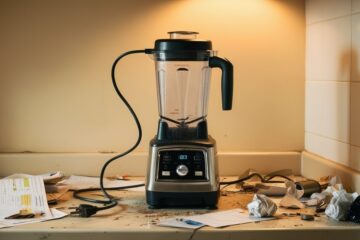The Cuisinart food processor is a game-changer for home cooks and kitchen enthusiasts. From chopping onions to kneading dough, this marvel of modern kitchen appliances has made meal prep faster, easier, and more versatile. But while it’s a joy to own, knowing how to attach its blade properly is essential—not just for getting the job done but also for safety and maintaining your processor’s longevity.
This guide will explain everything you need to know about how to put blade on Cuisinart food processor with safe and efficient results every time.
Understanding the Components of a Cuisinart Food Processor
Before we get into the step-by-step process, it’s important to familiarize yourself with the machine’s components. Knowing what you’re working with will streamline the attachment process and help ensure your food processor works safely and effectively.
Parts of a Cuisinart Food Processor
Your Cuisinart food processor consists of several key parts:
- Base Unit: The motorized foundation of the appliance. Make sure it’s placed on an even, stable surface.
- Work Bowl: The bowl that holds the food. This locks into place on the base.
- Blade(s): This is where the magic happens! Depending on the model, you may have one or multiple blades.
- Lid and Feed Tube: The cover that locks onto the work bowl. Many models have a feed tube used to add ingredients while processing.
- Pusher: Fits into the feed tube to help guide food down.
Types of Blades Available
Cuisinart food processors come with a variety of blade options. Some of the most common include:
- S-Blades (Chopping and Mixing Blade): Used for chopping, mixing, and pureeing.
- Dough Blade: Designed to knead dough without overworking it.
- Shredding and Slicing Discs: For grating cheese or slicing vegetables.
- Specialty Blades (e.g., julienne or French fry cutting): Add precision for certain slicing tasks.
Knowing the blade type you’re working with is essential for safe and effective attachment.
Built-In Safety Features
Modern Cuisinart processors are equipped with safety measures, such as locking mechanisms, to prevent accidental operation. These features ensure the machine will not run unless everything is aligned correctly and secured.
Preparing Your Cuisinart Food Processor for Use
1. Unplug the Appliance
Before starting, make sure your food processor is unplugged. This simple but vital step avoids unexpected accidents.
2. Clean the Components
Wash the work bowl, blades, and other removable parts with warm, soapy water (unless otherwise specified in the manual). This step eliminates food particles, dust, or manufacturing residue.
3. Gather Your Tools
No need for extra tools! All you need is your clean hands and the food processor components.
Identifying and Choosing the Blade
Differentiate Between Blade Types
Check your recipe or kitchen task to determine which blade you need. For instance:
- Use the S-blade to chop onions or puree soups.
- Opt for the shredding disc when grating cheese.
- Choose the slicing disc for evenly sliced cucumbers or zucchini.
Understanding Blade Orientation
Each blade type has a specific orientation to fit securely. Please pay close attention to how the blade is designed, as placing it backward or upside down may prevent the processor from working correctly or cause damage.
How to Attach the Blade to a Cuisinart Food Processor
Once you’ve prepped the processor and selected the appropriate blade, it’s time for assembly. Follow these steps to attach the blade securely.
Step 1: Align the Work Bowl
Place the work bowl on the processor’s base, ensuring it clicks and locks into place. The bowl won’t hold the blade securely unless it’s closed.
Step 2: Position the Blade
If you’re attaching the standard S-blade:
- Hold the blade by its hub (the center) to avoid touching the sharp edges.
- Align the blade opening with the center post of the work bowl.
- Slide the blade down the post until it rests snugly at the bottom of the bowl.
For discs (e.g., slicing or shredding):
- Attach the blade disc to the spindle included with your model.
- Securely place the spindle and disc assembly onto the center post.
Step 3: Check the Attachment
Once the blade is in position, gently tug at its hub. It should stay in place and not wobble. If there’s any looseness, remove the blade and try again.
Testing for Stability and Security
Perform a Stability Check
Before adding food, gently shake the blade to test its stability. If it moves, double-check the alignment of the bowl and blade.
Run a Dry Test
Plug in the processor and do a quick test run without food. Listen for smooth operation—any unusual vibrations or noises could indicate a loose attachment or misalignment.
Troubleshooting Common Issues
Even with careful setup, you may encounter occasional hiccups. Here’s how to troubleshoot common issues:
Problem 1: Blade Won’t Fit
- Ensure the work bowl is properly locked into its base.
- Check if the blade model matches your work bowl size and processor.
Problem 2: Blade Feels Unstable
- Recheck the alignment of the blade with the center post.
- Ensure no residue or debris is on the center post or blade hub.
Problem 3: Processor Won’t Turn On
- Verify that the bowl and lid are locked in place; many models won’t operate unless all components are aligned correctly.
If these steps don’t resolve the issue, refer to the product manual or contact customer support.
Maintenance Tips for Longevity
Taking care of your food processor is as important as knowing how to use it. Here are some tips for maintaining the blade:
Clean After Each Use
Wash the blade in warm, soapy water immediately after use. Quickly cleaning prevents food particles from drying on the surface, which could dull the edge.
Handle With Care
Always handle blades from the hub to avoid accidental cuts. Store blades in protective sheaths or a safe container to maintain their sharpness.
Regular Inspections
Inspect the blade regularly for wear, rust, or damage. Replace dull or damaged blades to keep your food processor performing at its best.
FAQs About Attaching the Cuisinart Blade
Q: Can I use any blade with my Cuisinart food processor?
A: No. Always check that the blade is compatible with your specific model.
Q: Do I need to wear gloves when handling blades?
A: While not necessary, wearing cut-resistant gloves can add an extra layer of safety.
Q: How often should I replace my food processor blade?
A: Most blades last several years with proper care. If you notice dull edges or poor performance, it’s time to replace them.
Master Blade Attachment for Safer and Smarter Food Processing
Attaching the blade of your Cuisinart food processor might feel tricky at first, but with practice, it becomes second nature. Proper blade attachment ensures not only efficient food processing but also the safety and longevity of your appliance.
Now that you’re armed with these tips, you’re ready to experiment with your processor’s full range of capabilities! Do you have any tips or stories about using your food processor? Share them in the comments—we’d love to hear from you. Happy cooking!





